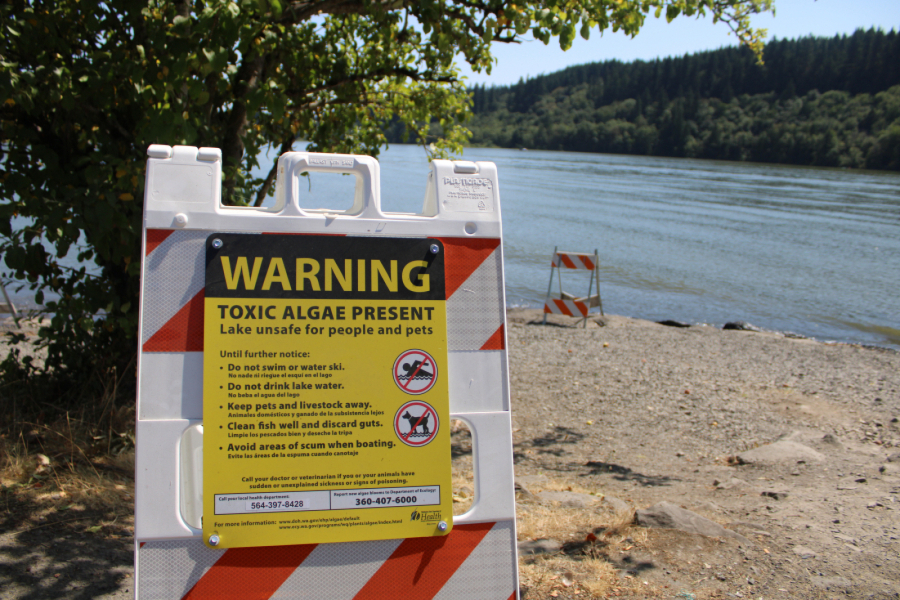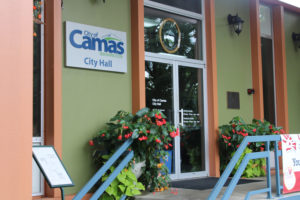Clark County Public Health is warning Lacamas Lake users that elevated levels of cyanotoxins from harmful algae have been found in the Camas lake.
Public Health reported that water samples collected Monday, July 1, showed “cyanotoxins above the threshold levels recommended by the Washington Department of Health.”
The county has posted warning signs at public access points around the lake to remind people that cyanotoxins can be harmful to humans and can be deadly for small pets that drink the water.
During the public health warning, county officials recommend people avoid swimming and water skiing in the lake; keep animals away from the lake water; avoid areas with scum while boating, kayaking, canoeing or paddle boarding on the lake; avoid drinking the lake water; and make sure to thoroughly clean all fish caught in the lake.
Public Health will monitor the lake and take weekly water samples during the toxic algal bloom.





